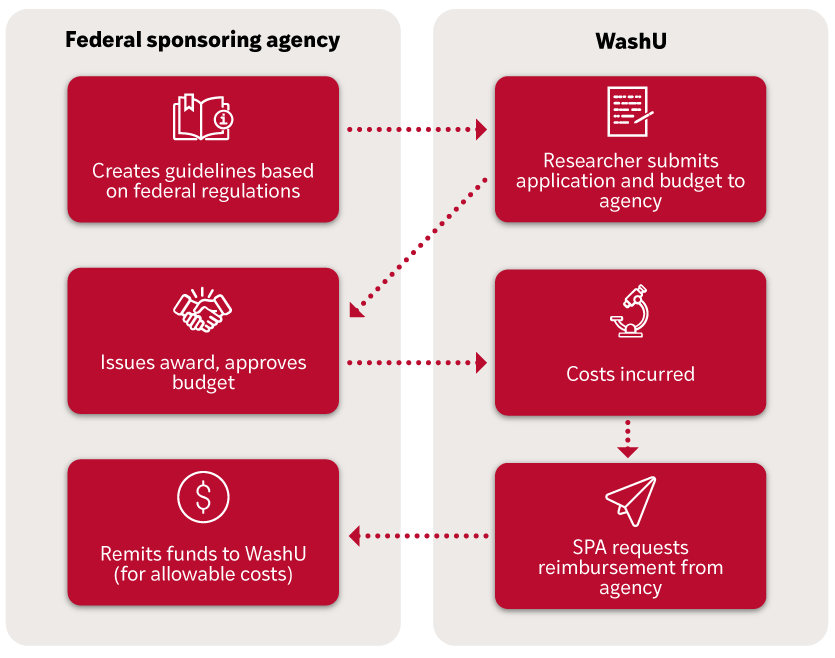The federal government directs how federal sponsors can spend funds. If the federal government changes spending regulations, agencies must comply with the new rules and advise researchers of the changes.
Steps to receive federal funding:
- Federal sponsoring agencies issue guidelines to grantees (or prospective grantees) based on federal regulations. There are often general agency guidelines and more specific guidelines for individual funding opportunities. Reference the Award Oversight page for additional information.
- Researchers and department administrators review agency guidelines and develop a proposal and budget that meet all agency requirements. The budget includes a projection of expenses and their purposes. This proposal is submitted to the federal agency for consideration.
- If the federal agency decides to award the proposal, they issue a Notice of Award (NOA) that contains specific guidelines about spending and activities for the award.
- As the research progresses, costs are incurred.
- Sponsored Projects Accounting (SPA) requests reimbursement from the federal agency for allowable costs.* Funds are not dispersed into a WashU account before expenses are incurred.
- The federal agency approves the reimbursement if it aligns with current federal guidance, then remits funds to WashU.
* Some awards may have different mechanisms for receiving payment from the sponsor.
